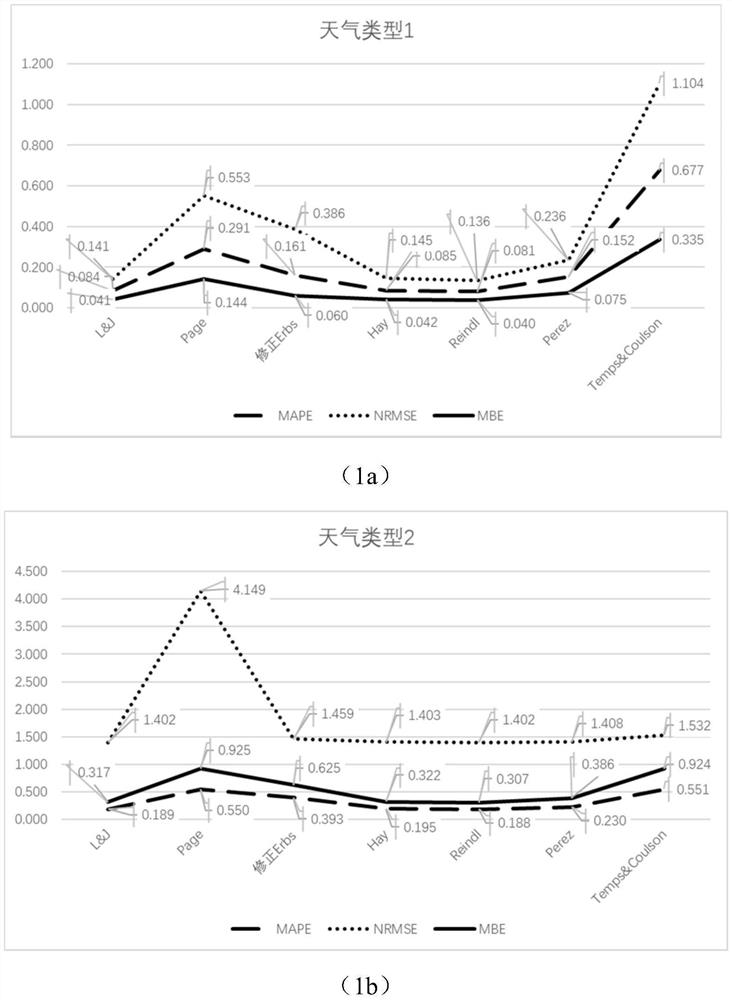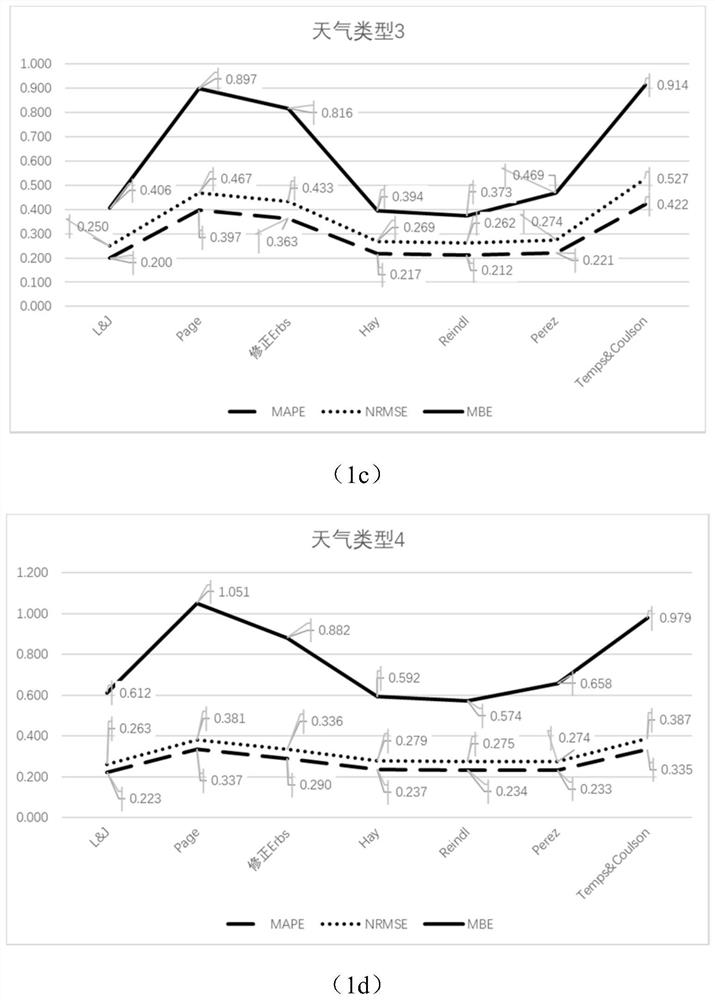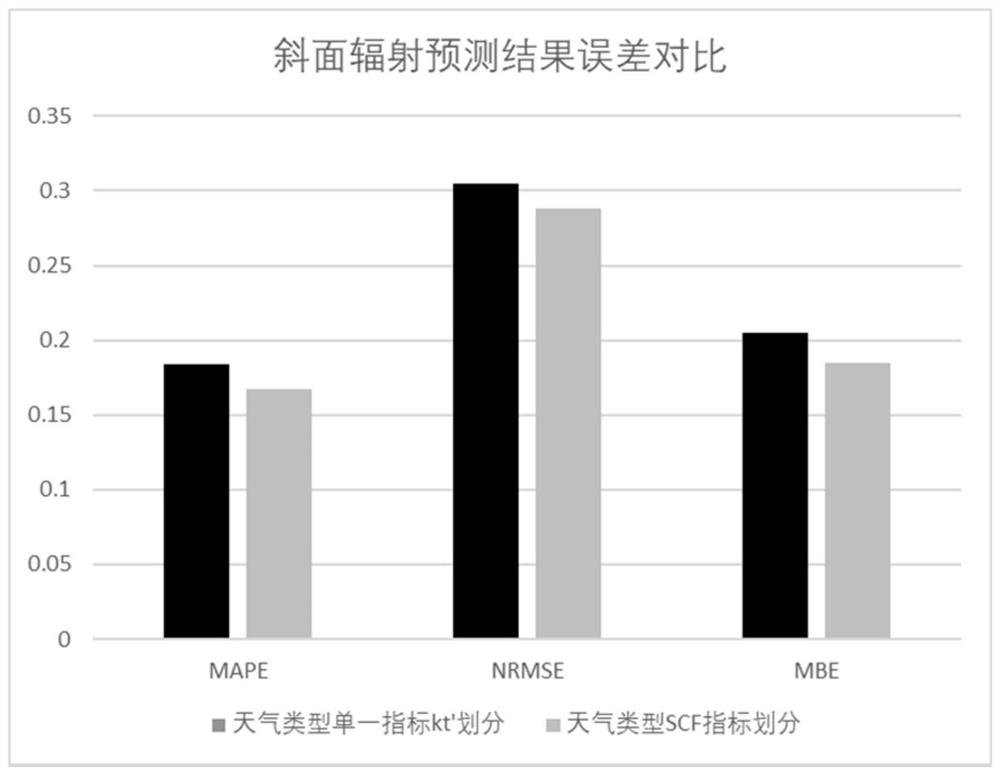Photovoltaic power prediction method based on solar radiation climate characteristic recognition
A solar radiation and feature recognition technology, which is applied in forecasting, instrumentation, data processing applications, etc., can solve the problems that photovoltaic power forecasting technology is difficult to apply to different locations, the error is large, and the link between power forecasting and radiation forecasting is not effective.
- Summary
- Abstract
- Description
- Claims
- Application Information
AI Technical Summary
Problems solved by technology
Method used
Image
Examples
Embodiment
[0058] The invention provides a photovoltaic power prediction method based on the identification of solar radiation climate characteristics. The method is based on the principle of forecasting method, based on the identification of weather types, to screen typical slope radiation models under each weather type, and then use photovoltaic cells to The output DC power and AC power prediction values are calculated by the model and inverter efficiency model, and the error analysis of each step model is carried out.
[0059] Such as image 3 Shown, the present invention specifically comprises the following steps:
[0060] 1) Division of weather types:
[0061] Clarity index k T Indicates the degree of transparency of the atmosphere, which is closely related to weather conditions and solar radiation. Its formula is:
[0062]
[0063] The amount of solar radiation on a horizontal surface outside the atmosphere I 0 The calculation formula is:
[0064]
[0065] in, ω are ...
PUM
 Login to View More
Login to View More Abstract
Description
Claims
Application Information
 Login to View More
Login to View More - R&D
- Intellectual Property
- Life Sciences
- Materials
- Tech Scout
- Unparalleled Data Quality
- Higher Quality Content
- 60% Fewer Hallucinations
Browse by: Latest US Patents, China's latest patents, Technical Efficacy Thesaurus, Application Domain, Technology Topic, Popular Technical Reports.
© 2025 PatSnap. All rights reserved.Legal|Privacy policy|Modern Slavery Act Transparency Statement|Sitemap|About US| Contact US: help@patsnap.com



